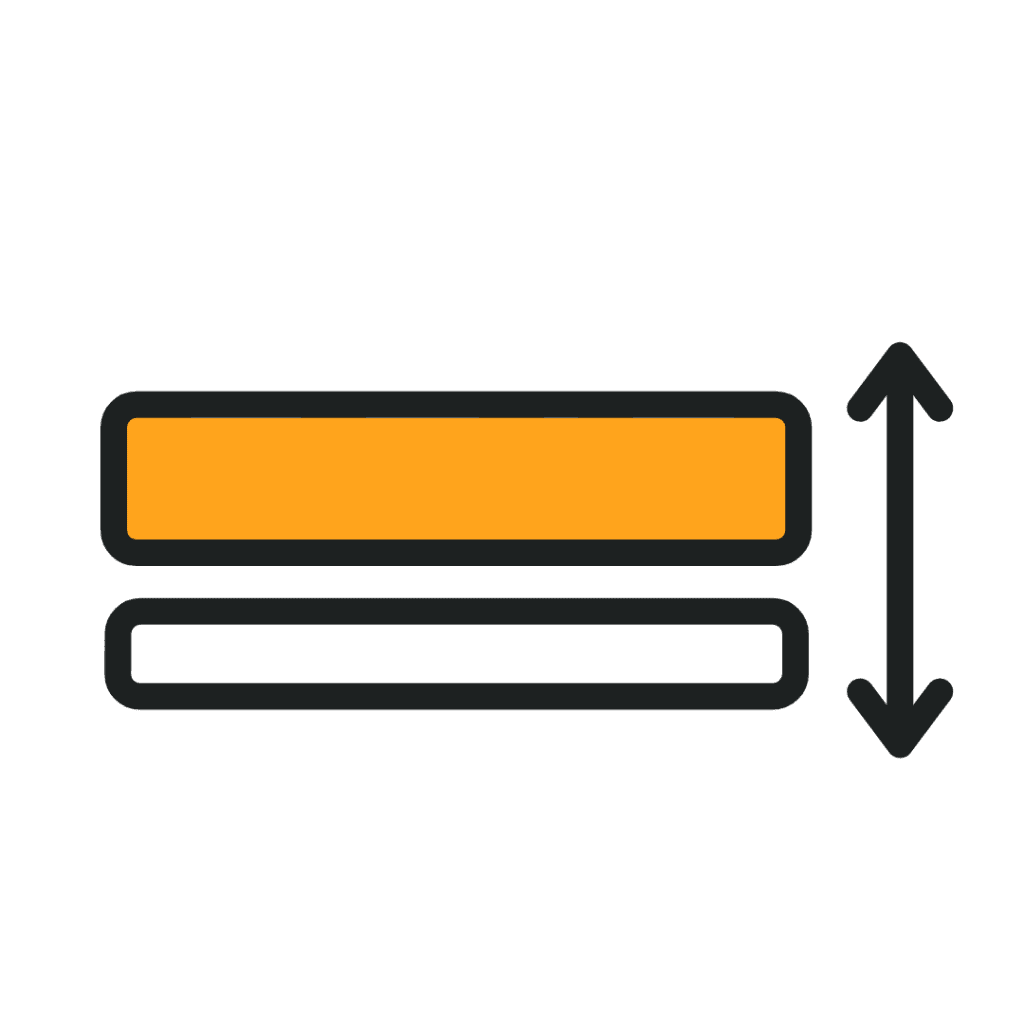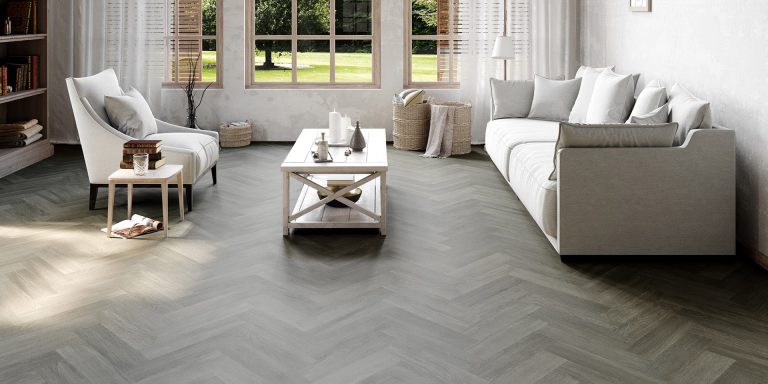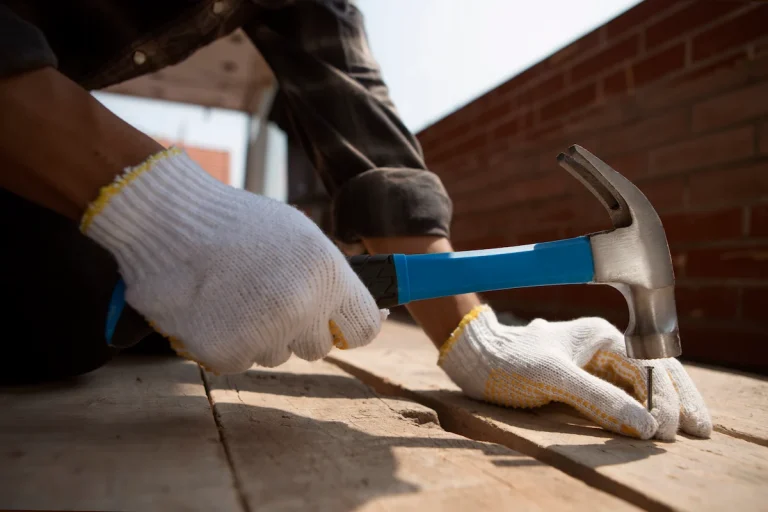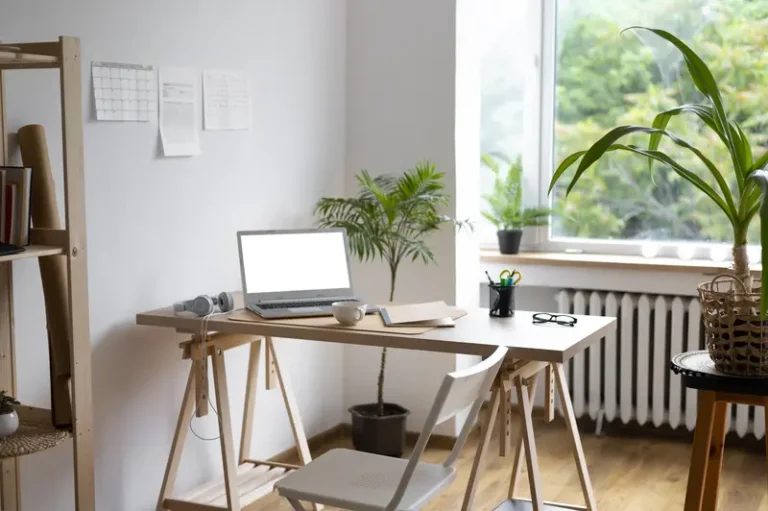Choosing the right flooring can transform your space, and two popular options are hardwood and parquet floors, each offering unique patterns and applications. While both offer stunning aesthetics and durability, they cater to different styles and preferences, making them versatile choices for various interior and exterior projects.
This article explores parquet vs. hardwood flooring, the difference between these two. It discusses their differences in installation, appearance, durability, and maintenance, including insights into moisture protection.
Also, learn how to care for these beautiful floors and decide which option is best for your home, considering style and price. Let’s dive in!
What Are Hardwood Floors and Their Diverse Applications?
Hardwood floors have long been cherished for their aesthetic appeal and durability, making them a popular choice in various architectural settings from tropical villas to modern hotels, and are often used in indoor and outdoor applications such as decks and facades.
These floors can be categorised into two main types: solid hardwood flooring and engineered hardwood flooring, each offering unique benefits and diverse applications, from indoor settings to outdoor structures like pergolas and stairs.
Solid hardwood flooring is crafted from a single piece of timber, while engineered hardwood consists of multiple layers bonded together, enhancing its stability and suitability for diverse environments.
The Different Types Of Hardwood Floors
There are primarily two types of hardwood floors: solid hardwood and engineered hardwood, each catering to different requirements in terms of installation and environmental adaptability.
When considering the choice between these two flooring options, it is essential to understand their unique compositions and benefits.
Solid hardwood consists of a single piece of wood, making it a classic choice known for its durability and natural beauty. This flooring type can be sanded and refinished multiple times, providing longevity and a touch of elegance.
On the other hand, engineered hardwood features a core of high-quality plywood layered with a hardwood veneer, offering enhanced stability and resistance to humidity fluctuations. Solid hardwood is ideal for dry, stable areas like sitting rooms. Engineered hardwood performs exceptionally well in basements and kitchens.
Installation methods differ; while solid hardwood typically requires nail-down or staple-down installation, engineered hardwood can be glued or floated over various surfaces, making it more versatile for different settings.
Notable wood species, such as oak, maple, hickory, and exotic types like Teak and Mahogany, are commonly used in both types, enriching the aesthetic value and quality of the floors.
What Is Parquet Flooring and Its Sophisticated Patterns?
Parquet flooring is a sophisticated flooring option that involves the assembly of wooden blocks in various decorative patterns, creating a unique visual appeal that can enhance the elegance of any interior and exterior space.
This remarkable flooring choice comes with a variety of design options, including popular patterns like chevron, herringbone, basketweave, and brickwork, allowing homeowners to effortlessly customise their flooring to match their personal style.
Each pattern brings its own character, adding depth and texture to any room. It is essential to understand the differences between solid parquet and engineered parquet; the former is crafted from a single piece of wood, offering durability and authenticity, while the latter incorporates layers, making it more resilient to environmental changes.
Regarding installation and maintenance, parquet flooring can be a rewarding investment. Proper installation is crucial for ensuring longevity, and routine maintenance, including regular cleaning with mops and liquid cleaners, will keep it looking pristine for years to come.
The Difference Between Parquet And Hardwood Floors
What is the difference between parquet and hardwood floors? The primary differences between parquet and hardwood floors lie in their installation methods, appearance, durability, maintenance requirements, and overall cost. These factors are crucial for homeowners to understand when making a flooring choice, considering elements like elegance and sophistication.
a. Installation
The installation process of hardwood floors can vary significantly between solid hardwood and engineered hardwood, with solid hardwood typically requiring nail-down or staple-down methods, while engineered hardwood offers more versatility with glue-down and floating options, suitable for diverse architectural needs.
Regarding solid hardwood, the mounting techniques are generally straightforward but demand precise conditions. Nail-down methods involve securing the planks using nails driven through the tongue of each board into the subfloor, creating a sturdy surface that can withstand years of wear. This technique, however, requires a plywood or similar subfloor, which is a consideration for some homeowners, especially those prioritising durability and elegance.
On the other hand, engineered hardwood presents more flexible installation options. Glue-down techniques allow for an adhesive to bond the planks to the subfloor, which can be less invasive and more accommodating to varying humidity levels. Floating installations involve laying the planks without any adhesives, merely clicking them together, which simplifies the process and offers versatile application options.
- Advantages of Solid Hardwood: Sturdiness, longevity, and enhanced resale value.
- Disadvantages of Solid Hardwood: Limited moisture tolerance and higher installation difficulty.
- Advantages of Engineered Hardwood: Diverse installation options, stability in varying climates, and often lower costs.
- Disadvantages of Engineered Hardwood: Potentially lower resale value and a less authentic wood feel.
Meanwhile, parquet flooring installation involves arranging small wooden pieces in geometric patterns to create a decorative design. The process typically includes preparing the subfloor, applying adhesive, and carefully laying the parquet tiles or blocks in the desired pattern. After installation, the floor is sanded, stained (if needed), and sealed to ensure durability and a smooth finish. Due to the intricate design, parquet installation often requires precision and expertise for the best results.
b. Appearance
Regarding appearance, parquet flooring stands out with its intricate patterns and decorative elements, while hardwood floors are known for their timeless elegance and natural beauty, often utilised in diverse styles and architectural designs.
Visually, parquet flooring offers a variety of engaging designs that include styles like chevron, which creates a dynamic V-shape, and herringbone, characterised by its zigzag effect. These patterns can add an artistic flair to any room, often becoming a focal point in interior design.
In contrast, hardwood floors exude a classic charm through the unique grain patterns that vary from one plank to another, offering a warm and inviting atmosphere. This natural variation can evoke a sense of connection with nature, making it a popular choice for those seeking a more organic feel.
Ultimately, the choice between parquet and hardwood may depend on personal style preferences and the desired aesthetic impact on the overall design of a space.
c. Durability
Durability is another key factor to consider, as solid hardwood floors generally possess a longer lifespan compared to engineered hardwood, which can be subject to moisture and environmental changes. This distinction is pivotal for homeowners who wish to invest in long-lasting flooring solutions that withstand the test of time, particularly in environments where wear and tear may occur more readily. Solid hardwood offers remarkable resilience, allowing it to be refinished multiple times throughout its life, which can significantly extend its usability and aesthetic appeal, especially in areas like swimming pools and terraces.
On the other hand, engineered hardwood presents certain limitations regarding refinishing, typically only allowing for a single or double sanding before the wear layer becomes too thin. Both flooring types are designed to handle everyday wear, but the moisture protection differs:
- Solid Hardwood: Due to its dense nature, it naturally resists moisture to some extent but requires proper sealing and maintenance.
- Engineered Hardwood: Designed with a multiple-layer construction, it offers better resistance against fluctuations in humidity but has a more limited lifespan in terms of refinishing.
Whereas, parquet flooring is known for its durability, especially when made from hardwood like oak or walnut. It can withstand heavy foot traffic and, with proper care, can last for decades. Parquet floors are also easy to refinish, allowing them to maintain their appearance over time. However, they can be sensitive to moisture and humidity, so proper maintenance and sealing are essential to ensure long-lasting durability.
d. Maintenance
Maintenance differs considerably between parquet and hardwood flooring, with both requiring regular cleaning and protective coatings to sustain their quality over time. This can include using specific mops and liquid cleaners to ensure an environmentally friendly approach.
Regarding maintaining floors, understanding the distinct needs of each type is crucial for achieving longevity and aesthetic appeal. Parquet flooring, crafted from small pieces of wood, often demands gentle care to avoid damaging the intricate patterns. Using a soft mop alongside a liquid cleaner specifically designed for wood surfaces can effectively lift dirt without causing scratches. Conversely, hardwood flooring, which consists of larger planks, can be treated with slightly more robust solutions, though caution is still advised. Regular inspections and repairs can also help maintain the elegance of these floors.
For parquet floors, regular sweeping is essential. Annual refinishing may enhance visibility and preserve the charm of hardwood. Inspecting for scratches and dents can help address repairs promptly, ensuring a polished look. In both cases, applying protective coatings every few years can create a barrier, preserving each floor’s unique character against general wear and tear. This is particularly important in regions with varying climate conditions like Indonesia.
Cost
The price of flooring can vary widely, with parquet generally being more expensive due to the complexity of its installation and design compared to traditional hardwood flooring, which often includes varieties like Teak, Mahogany, and Acacia.
When evaluating the overall costs, it is essential to consider both the initial outlay and the long-term benefits associated with each option. Parquet flooring, known for its intricate patterns, often requires specialist installation, which can lead to elevated labour expenses.
The average installation costs for parquet can climb, especially if opting for a unique design. Hardwood usually offers easier installation, which can lessen additional expenses.
Long-term value might favour hardwood, given its timeless appeal and durability. Understanding these factors can help homeowners make an informed investment decision that aligns with their budget, aesthetic preferences, and the overall architecture of their home.
Parquet vs. Hardwood Flooring, Which One Should You Choose?
Choosing between parquet and hardwood flooring ultimately depends on various factors such as style preferences, intended uses, environmental considerations, and the existing furniture and accessories in your home, making it essential to evaluate your specific needs.
Factors To Consider When Choosing Between Parquet And Hardwood Floors
When deciding between parquet and hardwood floors, several factors come into play, including style, maintenance requirements, and overall cost, which can significantly influence your flooring choice.
First and foremost, lifestyle can greatly impact the decision; those with pets or active families may favour more durable options that can withstand wear and tear. Foot traffic in various areas of the home is crucial; high-traffic zones might require a tougher finish or material. Climate conditions also play a role; hardwood can be susceptible to swelling or contracting in extreme humidity or temperature changes, whereas parquet offers increased stability.
Considering budget is essential, as parquet might come at a lower upfront cost, yet the long-term maintenance should also be factored in when making the final decision. In terms of wealth, investing in high-quality options like Mahogany or Teak can increase the floor’s longevity and value.
- Durability
- Maintenance Requirements
- Style Preferences
- Environmental Factors
Can You Combine Parquet And Hardwood Floors In Your Home?
Combining parquet and hardwood floors in your home can create a unique aesthetic appeal, allowing for versatility in interior design while also maintaining a cohesive look throughout different spaces.
This blend of materials opens the door to an array of creative possibilities, enabling homeowners to express their personal style with flair. For instance, integrating parquet patterns in specific areas, such as living rooms or entrances, can draw attention and establish a focal point without overwhelming the entire setting. Utilising a blueprint can aid in planning the layout for a harmonious blend of flooring types.
Here are some tips to achieve a balanced design:
- Consider using a consistent colour palette to unify the different flooring types.
- Mix different wood finishes but keep the undertones similar for harmony.
- Use rugs to bridge transitions between parquet and hardwood sections.
- Think about each room’s purpose and choose the flooring styles that complement the functionality and atmosphere.
By thoughtfully combining these elements, the overall appeal of your interiors can be significantly enhanced.
How To Care For Parquet And Hardwood Floors?
Proper care and maintenance are crucial to preserving the beauty and longevity of both parquet and hardwood floors, involving routine cleaning, protective coatings, and timely repairs to address wear and tear.
a. Cleaning
Cleaning parquet and hardwood floors involves using the right tools and products, such as microfibre mops and specially formulated liquid cleaners, to avoid damaging the wood’s surface while effectively maintaining their natural beauty and longevity.
To achieve the best results, it is essential to establish a cleaning routine that includes:
- Weekly cleaning: Utilise a microfibre mop to gently remove dust and dirt, ensuring that the wood retains its shine without harmful scratches.
- Monthly deep cleaning: Apply a liquid cleaner designed specifically for wood surfaces, avoiding harsh chemicals that can strip the finish.
- Quarterly maintenance: Consider using a wood conditioner to nourish the grain and prevent drying out.
Maintaining the right moisture level is crucial. Excess moisture can cause warping and irreparable damage, so always wring out mops well before use. A damp cloth is often a better choice than a soaking wet one.
b. Preventing Scratches And Damage
Preventing scratches and damage to parquet and hardwood floors starts with placing protective pads under furniture and maintaining appropriate humidity levels in the home environment.
Adopting a few strategic measures can significantly enhance the longevity of these beautiful surfaces. Homeowners should consider applying protective coatings that serve as a shield against wear, while also facilitating easier cleaning.
Regular maintenance routines, such as damp mopping and avoiding harsh chemicals, can help keep floors looking pristine. Careful furniture placement can prevent heavy items from causing indentations or scratches.
By using area rugs in high-traffic areas, the risk of damage can be further minimized, while ensuring that the aesthetic charm remains intact.
Environmental considerations, such as maintaining a balanced humidity level, also play a crucial role, as both overly dry and excessively humid conditions can adversely affect the flooring.
c. Refinishing
Refinishing parquet and hardwood floors is an essential maintenance task that can restore their original beauty, extend their lifespan, and address any wear and tear over time, making it a worthwhile investment for homeowners looking to maintain the integrity of their flooring.
Recognising the signs that refinishing is necessary is crucial in maintaining these surfaces. Indicators include deep scratches, dull finishes, and noticeable discolouration, which signify that the protective layer may be wearing thin. To keep floors looking pristine, understanding the refinishing process is vital. In outdoor areas, consider decking solutions that use the same wood types for a consistent look.
The steps involved in refinishing typically start with clearing the area of furniture and debris. Next, any damages are repaired, followed by sanding the floor to remove the old finish and imperfections. Once sanded, it is essential to vacuum thoroughly to eliminate dust. Afterward, the application of a stain (if desired) and several coats of finish can protect against future wear while enhancing the wood’s natural features.
- Clear the area
- Repair any damages
- Sanding
- Vacuuming
- Applying stain and finish
Whichever you choose, high-quality materials are key to achieving a stunning finish. For top-tier parquet and hardwood flooring, look no further than TEKA Flooring. With our extensive selection and expert fitting services, you’ll find the perfect flooring solution to elevate your space!
Read also:

































